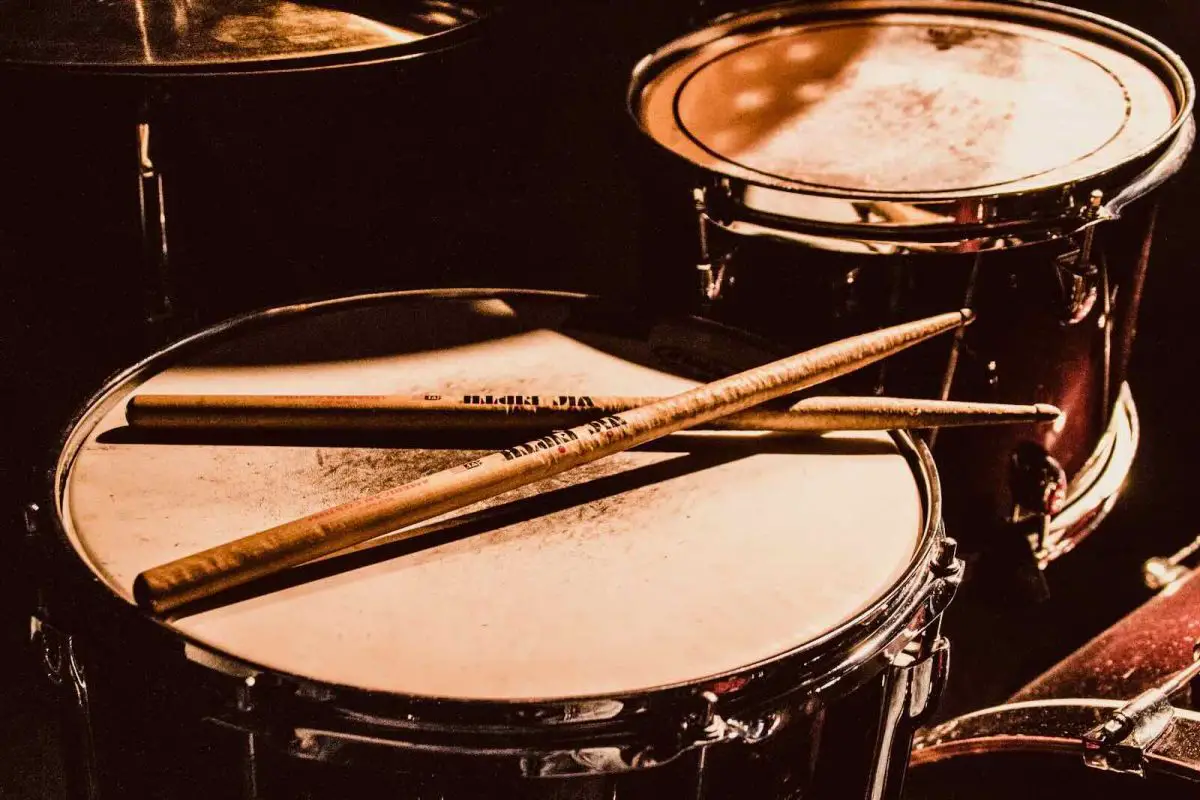Acoustic drums are among the loudest instruments, even if played relatively gently. As a result, it’s important to think carefully about whether this can cause issues for the people you live with or for neighbours. Fortunately, there are things you can do to reduce volume and minimise the impact on the people living around you.
Some of the things you can do to make playing the drums at home include:
- Playing at quieter times: If possible, try to play during times when others in the house are less likely to be disturbed, such as during the day when people are at work or school.
- Using mutes or practice pads: Mutes and practice pads can be placed on top of the drum heads to reduce the volume and create a more muted sound.
- Negotiating with your neighbours: If you live in a shared building, it’s a good idea to talk to your neighbours and see if they have any concerns about the noise. You may be able to agree about when it’s okay to play or make other arrangements to minimise the impact on them.
- Using electronic drums: Electronic drums are generally quieter than acoustic drums, and come with headphone jacks so you can play with reduced volume
- Soundproofing the room: Adding sound-absorbing materials to the walls, floor, and ceiling of the room can help reduce the amount of sound that escapes. But remember to be realistic – you won’t be able to fully soundproof a room on a small budget.
Read on for more tips on how to play your acoustic drums at home.
Why trust eDrumHub: While we may be a site predominantly about electronic drums, what we really care about is empowering drummers to be able to practise at home. I regularly play my acoustic kit alongside my electronic one, so you can trust the information below to be unbiased.
Are drums too loud for playing in a house?
Drums are a loud instrument and can be too loud for some houses. In most cases, acoustic drums will be too loud for terraced or row houses and can be too loud for semi-detached or duplex houses. To avoid disturbing neighbours, acoustic drums are best suited to detached or stand-alone houses, where there is usually plenty of space around all sides to help reduce the disturbance for neighbours.
Can you play acoustic drums in a semi-detached house?
For our American readers, a semi-detached house is the same as a duplex, where a single building is split into two family homes with a separate entrance and address for each.
An acoustic drum kit is almost certainly going to be heard next door in a semi-detached house. In the UK and many other countries, the shared wall in a semi-detached house will be subject to certain soundproofing regulations. However, the typical shared wall (also known as a party wall) will not be able to muffle a drum kit in the room next door completely, there will be some sound leakage.
However, there are some things you can do to minimise the sound your neighbour hears. You should avoid setting up your drum studio in a room that faces your shared wall, especially if it’s a large wall with a large overlap with your neighbour’s room next door. The bigger the overlap, the more noise will pass through to next door. This is also true of small rooms, which condense the sound and mean a more insulated wall is needed. You can learn more about this over at Parker Jones Acoustics.
The best thing to do is create as much space between your drums and the neighbouring wall by setting up your drum studio on the other side of the house. That way there is more space between the drums and the wall, with other rooms that can absorb some of the sound. This works better if the rooms in between are large.
It is also possible to add additional soundproofing to your shared wall, however, be aware that this is unlikely to make your drums inaudible next door. Professional studios are soundproofed by creating a “room within a room”, which means there is an air gap that absorbs sound between the drum room and the actual walls of the building. However, this is expensive to build and reduces the usable space of the room.
Beyond this, the best thing you can do to limit noise nuisance for your neighbour is to limit your practice to 30-minute sessions within sociable hours and consider some of the sound-reducing tips further down in this article.
How do you play acoustic drums without disturbing neighbours?
The truth is that playing acoustic drums at home can be a challenge without understanding neighbours. Drumming is very loud, often upwards of 120 decibels, and if not played responsibly, drumming can verge on anti-social behaviour.
There are several things you should consider if you want to play the drums without disturbing your neighbours:
- Only play the drums during sociable hours, such as between 9 am and 7 pm (though this should vary based on what is acceptable or customary in the country you live in)
- Limit your drumming sessions to 30 minutes each time
- Base your playing schedule around your nearest neighbour’s routine if you can, for example only play when they are out of the house
- Consider having a conversation with your neighbour about how you can make your drumming less disruptive for them if you’re unsure when they are typically at home
- If you have a shared wall with a neighbour, set up your drums on the other side of the house so it’s furthest from their wall as possible
- Use a set of drum mutes and low-volume cymbals for the majority of your drumming at home to reduce noise
FAQs
How to make your acoustic drums quieter
If you’ve already limited your drumming to 30 minutes per day and still are unable to satisfy your neighbours, then the good news is there are things you can do to make your acoustic drums quieter. The bad news for you is that this changes the sound and feel of your drums.
The first thing to try is a set of drum mutes. Drum mutes are inexpensive rubber disks that can be placed on top of drums and cymbals, plus a large foam pad to cover the bass drum batter head. These mutes dramatically reduce the volume of your drums, but they change the sound into more of a ‘thud’ on each drum. When used on cymbals, you’ll hear some of the overtones of the cymbal but with a very fast decay. When used on a snare drum, you’ll still activate the snare wires when striking the drum, so the snare still sounds somewhat similar to how it’s supposed to when unmuted.
Drum mutes are good if you need to do everything you can to make an acoustic kit quieter on a small budget. Be aware however that ‘impact noise’ will still be generated by your bass drum beater hitting the bass drum mute, which can travel through walls and floors. One way to reduce this is by building your own DIY noise eaters or other Roland Noise Eater alternatives like a tennis ball riser.
If you need a more permanent solution to reducing the volume of your acoustic kit, then you could look at mesh drum heads and low-volume cymbals.
Swapping out your acoustic drum heads for mesh ones dramatically reduces volume, but at the same time eliminates almost all the tone from your drum. That’s because the hundreds of holes in mesh heads don’t move anywhere near as much air, which is necessary to keep the volume down. Some of the tone can be retained if you keep the acoustic resonant head on the drum and tune it relatively high.
Be aware also that mesh drum heads feel different to acoustic heads with more of a springy, bouncy feel. This can be mitigated by using lightweight drumsticks – check out our article on the best drumsticks for electronic drums for more information.
Low-volume cymbals produce a similar effect as mesh heads but for cymbals. These special practice cymbals have hundreds of holes drilled into them which means when struck, the cymbal moves less air and in turn, results in less volume.
Again, there is a compromise on sound. Low-volume cymbals typically sound more tinny than regular acoustic cymbals. However in my opinion, the sound is still better than using a cymbal mute, and in general, compromises need to be made if you need to lower the volume of your acoustic kit.
Finally, another product that can help reduce the sound of your acoustic drums while retaining some of the sound characteristics is the RTOM Black Hole Practice System. This is a range of drum heads that clip on over the top of your existing drum heads to reduce the sound they make. They are similar to standard mesh heads but have a patch in the centre which creates a bit of tone that would otherwise be missing from mesh heads.
The good thing about these drum heads is they can quickly be clipped on and off without affecting your real acoustic heads below. That’s useful for drummers who want to be able to quickly switch between quiet and loud practice but only have space for one kit. The downside though is the heads raise the surface of all your drums by around 1-2 inches, meaning you may need to adjust your drum throne or other parts of your kit for ergonomics.
Consider an electronic drum kit
If noise is likely to be an issue, then it’s worth considering an electronic drum kit. Many acoustic drum purists indeed dislike electronic drums because they don’t feel the same to play. However, if you decide to go down the route of using mesh heads and low-volume cymbals with your acoustic drum kit, then the playing feel will be very similar to the majority of electronic drum kits.
In my view, at this point, you may as well switch to an electronic kit, because you’ll get the same playing feel but be able to trigger drum sounds that sound much more realistic than the tapping of low-volume cymbals and mesh head drums.
Read more about the differences between acoustic and electronic drum kits in our guide.
How to practise the drums without a drum kit
Unfortunately, neither acoustic or electronic drums work for some budding drummers, whether because of the noise or the space required. But all is not lost! There are still ways you can develop your drumming skills without a drum kit. Find out more about learning the drums without a drum kit.
Featured image credit: Matthijs Smit
This article contains affiliate links. If you purchase a product through certain links on our site, we may earn a small affiliate commission. Learn more about our adverts and why you can trust eDrumHub here.



